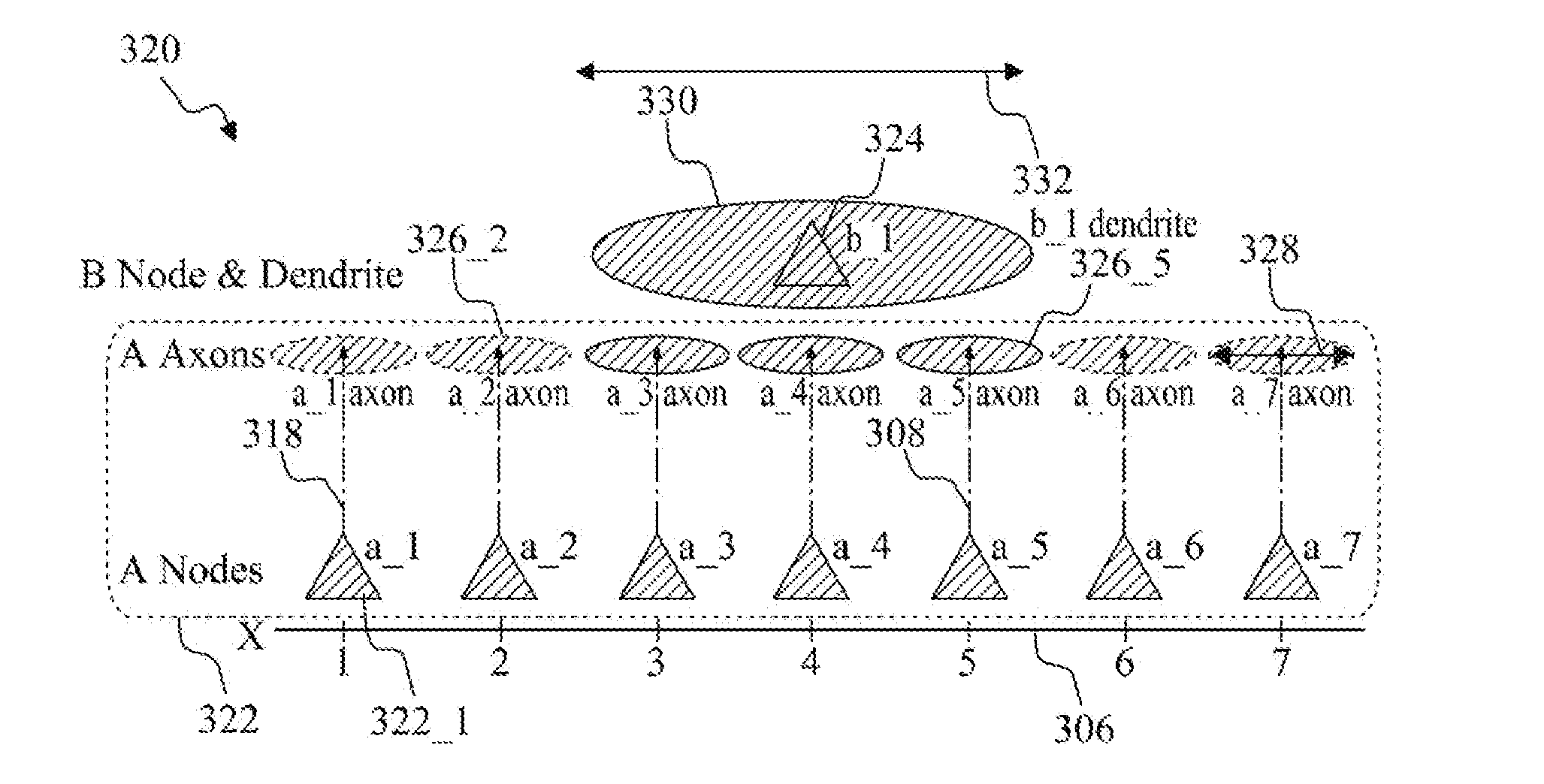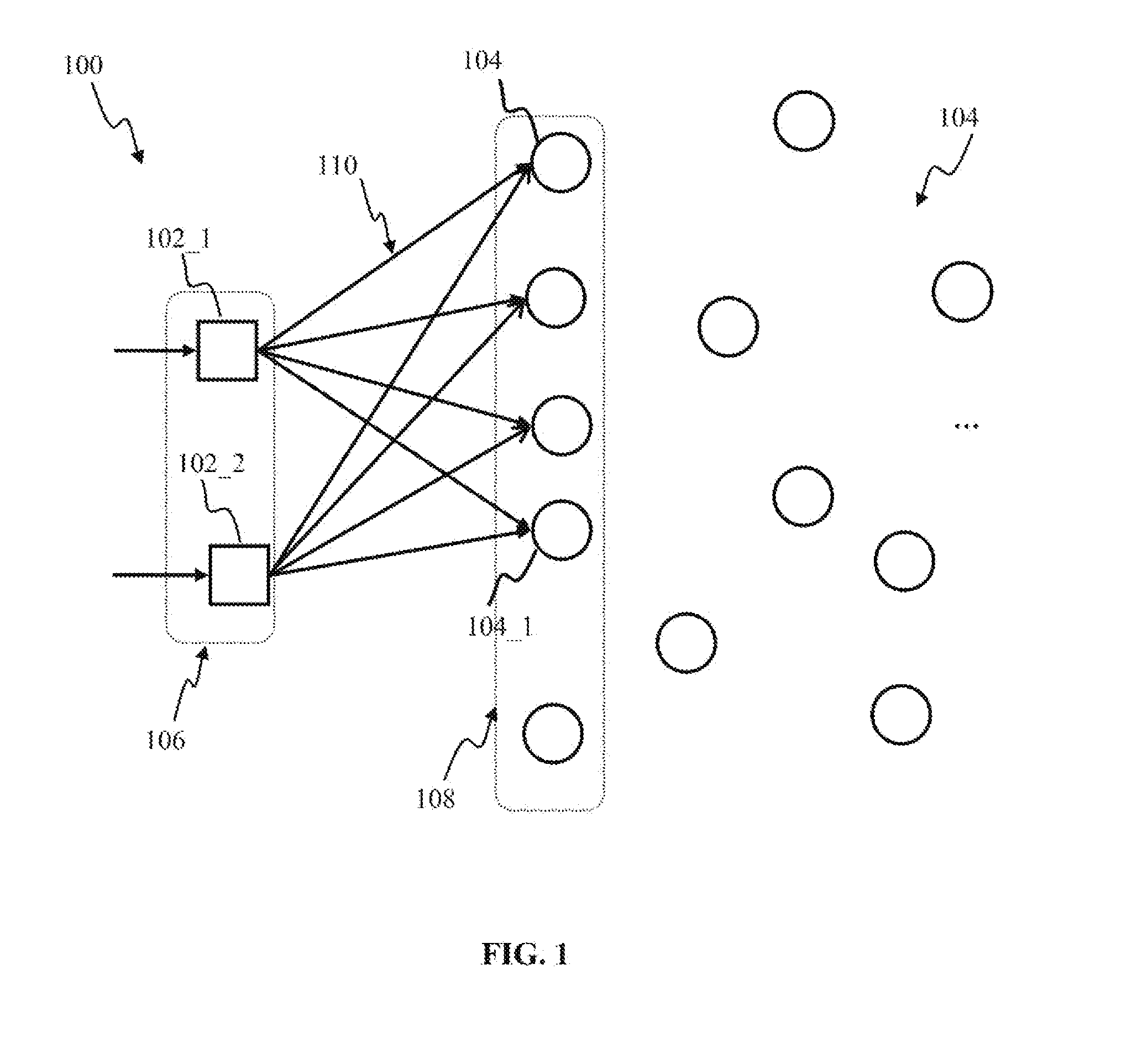Tag-based apparatus and methods for neural networks
- Summary
- Abstract
- Description
- Claims
- Application Information
AI Technical Summary
Benefits of technology
Problems solved by technology
Method used
Image
Examples
example 3
[0172]The following statement:
[0173]exc OR inh TAGGED all
may add tag ‘all’ to all ‘exc’ and ‘inh’ neurons for easy reference.
example 4
[0174]The following statement:
[0175](exc AND id<400) OR (inh AND id<100) TAGGED first half
may cuts the network in half by assigning an extra tag to the first half of elements.
OF Operator and Subsets
[0176]In some implementations, the expression
Listing. 4n OF
may return a list of n random elements satisfying the tag filter condition. If the tag filter returns fewer than n elements, then some elements may be duplicated, so that the total number of elements returned by the expression of Listing 5 is equal to n. The OF operator may not assign new tags. The OF operator may select a subset of elements. To assign tags to the elements of the subset, the TAGGED operator may be used. The expression
Listing 5.100 OF cones TAGGED S_cones
may select 100 elements from the node population of cones and may tag individual selected elements as the S_cones. Similarly, the expressions
Listing 6.300 OF (cones AND NOT S_cones) TAGGED M_conescones AND NOT M_cones AND NOT S_cones TAGGED L_cones
may select 300 e...
example 6
[0177]According to some implementations, a network comprising 800 excitory (exc) and 200 inhibitory (inh) neurons may be split into two equal sub-networks, subnetwork1 and subnetwork2, each comprising 400 exc and 100 inh randomly selected neurons, as follows:
Listing 7.400 OF exc TAGGED subnetwork1100 OF inh TAGGED subnetwork1400 OF (exc AND NOT subnetwork1) TAGGED subnetwork2100 OF (inh AND NOT subnetwork1) TAGGED subnetwork2
[0178]Contrast the implementation of Listing 7 with the following statements:
Listing 8.500 OF (exc OR inh) TAGGED subnetwork1500 OF (exc OR inh) TAGGED subnetwork2.
The statements of Listing 8 do not guarantee that the each of subnetwork1 and subnetwork2 comprises exactly 400 excitatory and 100 inhibitory neurons.
PUT Operator and Instantiation of Units
[0179]This PUT operator may be used to instantiate and tag network units as follows:
Listing 9.PUT n OF unit_class
The PUT operator may be an instruction to create n instances of the ‘unit_class’ type and tag them as ...
PUM
 Login to View More
Login to View More Abstract
Description
Claims
Application Information
 Login to View More
Login to View More - R&D
- Intellectual Property
- Life Sciences
- Materials
- Tech Scout
- Unparalleled Data Quality
- Higher Quality Content
- 60% Fewer Hallucinations
Browse by: Latest US Patents, China's latest patents, Technical Efficacy Thesaurus, Application Domain, Technology Topic, Popular Technical Reports.
© 2025 PatSnap. All rights reserved.Legal|Privacy policy|Modern Slavery Act Transparency Statement|Sitemap|About US| Contact US: help@patsnap.com



